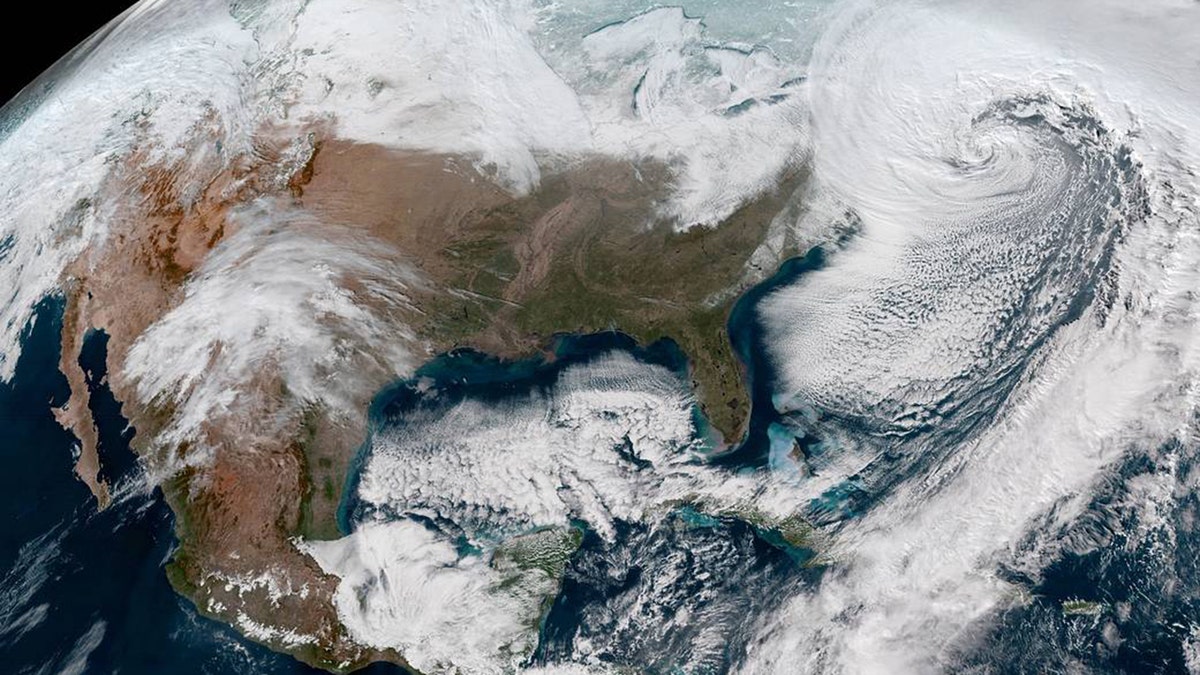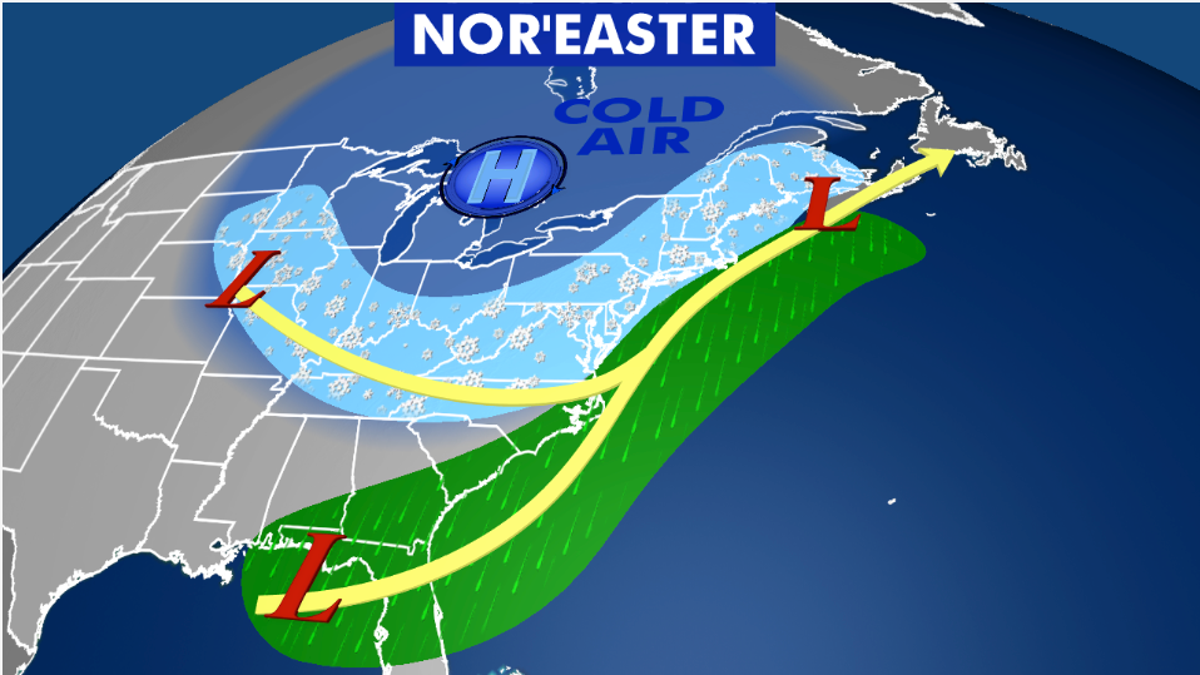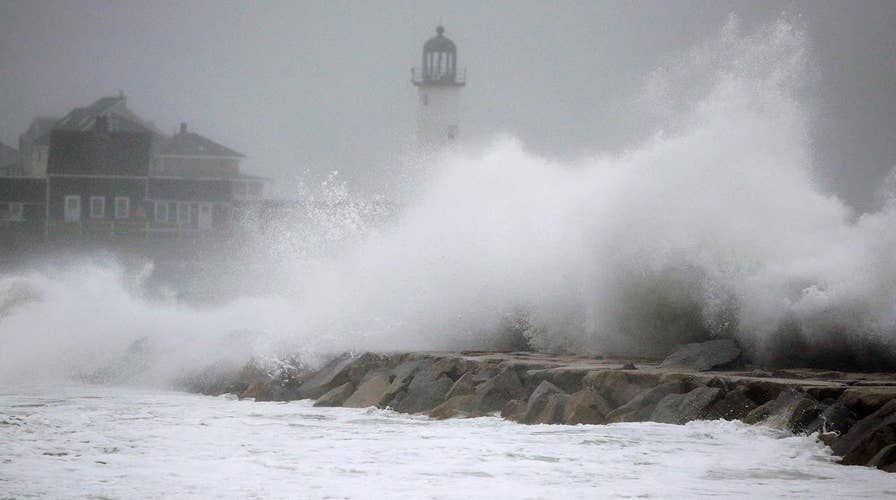Powerful nor'easter slams the Northeast
A powerful nor'easter barreled into the East Coast, bringing heavy rain, strong winds and wet snow as residents from the mid-Atlantic to Maine braced for coastal flooding.
For residents along the East Coast, the term "nor'easter" conjures up thoughts of plowable snow, wind and heavy rain.
According to the National Severe Storms Laboratory, the official definition of a nor'easter is a strong low-pressure system that impacts the Mid-Atlantic and New England states. The storm systems can form over the land of the eastern U.S. or over the coastal waters of the Atlantic Ocean.
"These winter events are notorious for producing heavy snow, rain, and tremendous waves that crash onto Atlantic beaches, often causing beach erosion and structural damage," according to the NSSL. "Wind gusts associated with these storms can exceed hurricane force in intensity."
LAKE EFFECT SNOW: HERE'S HOW IT IMPACTS THE GREAT LAKES
The storms get their names from the continuously strong northeasterly winds blowing in from the ocean ahead of the storm and over the coastal areas.

A powerful nor'easter can be seen in January 2018 impacting the Northeast states. (NOAA)
"What makes them so strong is the warm and moist air from the Atlantic that feeds the storm, causing it to grow explosively," according to the NSSL.
The National Weather Service says that nor'easters usually develop in the latitudes between Georgia and New Jersey, within 100 miles east or west of the East Coast. The storms may occur at any time of the year but are more frequent and violent between September and April.
The East Coast of the U.S. provides an "ideal breeding ground for the storms," according to forecasters.
WINTER STORM WARNING VS. WINTER WEATHER ADVISORY: HERE'S THE DIFFERENCE
The polar jet stream in winter transports cold Arctic air southward across the plains of Canada and the U.S., then eastward toward the Atlantic Ocean. At the same time, warm air from the Gulf of Mexico and the Atlantic tries to move northward.

Nor’easters are responsible for the biggest snowstorms on record from the Mid-Atlantic to New England.
"The warm waters of the Gulf Stream help keep the coastal waters relatively mild during the winter, which in turn helps warm the cold winter air over the water," the NWS states. "This difference in temperature between the warm air over the water and cold Arctic air over the land is the fuel that feeds nor’easters."
CLICK HERE FOR MORE WEATHER COVERAGE FROM FOX NEWS
Depending on the amount of cold air available and how closely the storms move up the East Coast, nor’easters can produce impressive amounts of snow and are responsible for the biggest snowstorms on record from the Mid-Atlantic to New England, according to Fox News meteorologist Brandon Noriega.
The track of the storms near Gulf Stream and the ocean off the East Coast allows ample moisture for "intense" rain and, or snow. Total snowfall of one to three feet is common with the most intense nor’easters.
"Past nor’easters have been responsible for billions of dollars in damage, severe economic, transportation and human disruption, and in some cases, disastrous coastal flooding," according to the NWS. "Damage from the worst storms can exceed a billion dollars."


